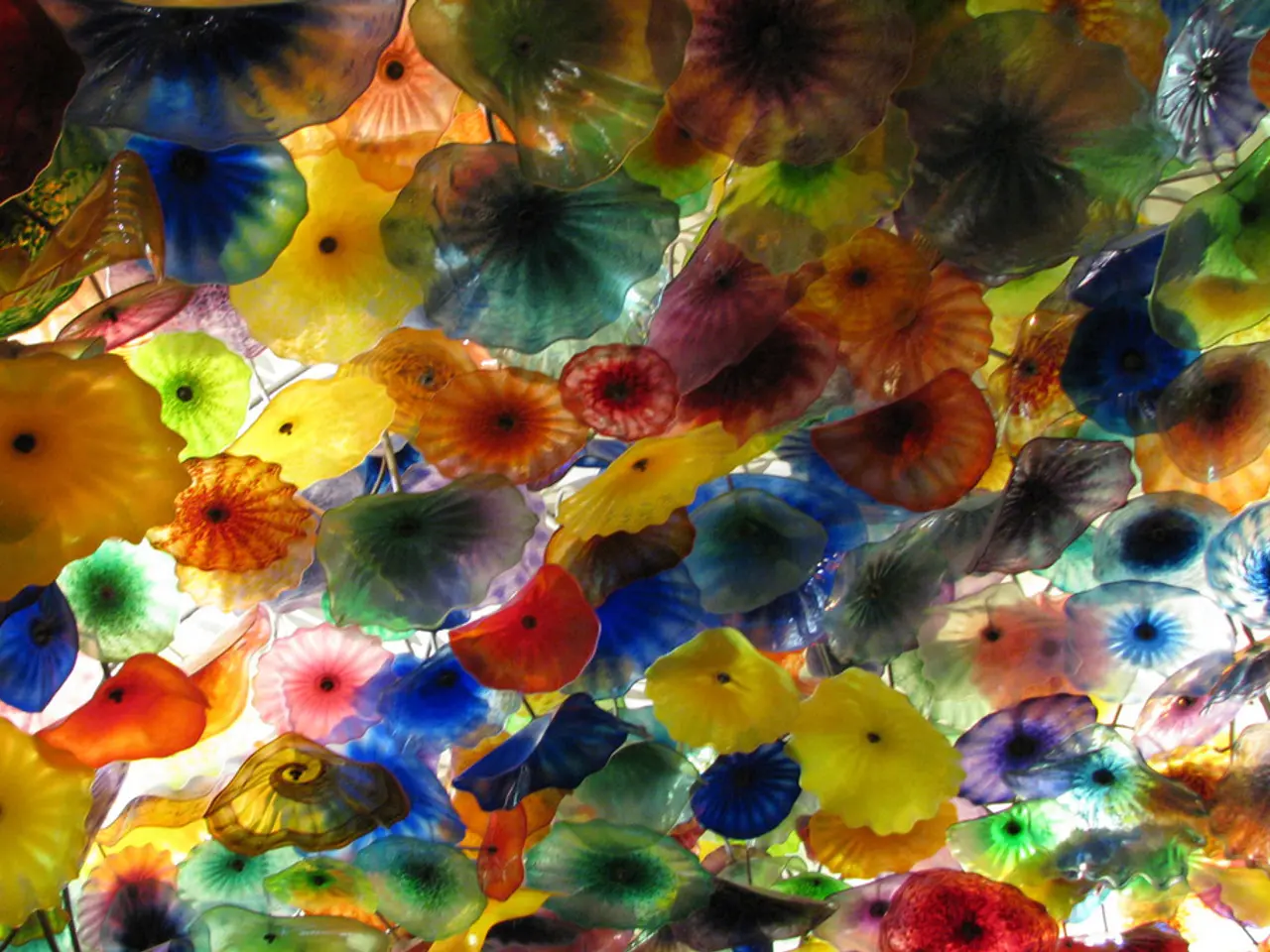Simplified Understanding of Color Theory: Enhance Your Design Victories
When it comes to creating captivating designs, the choice of colors plays a crucial role. Designers use various principles from color theory, consider psychological effects, ensure accessibility, and stay updated with current trends to select color combinations that make a lasting impact.
Understanding Color Theory
Color theory is a fundamental part of designing effective color combinations. The color wheel, for instance, helps designers understand relationships like complementary colors (opposites) for strong contrast and attention, analogous colors (neighbors) for harmony and unity, and triadic schemes (three equidistant colors) for vibrancy. More nuanced schemes like split complementary and square schemes provide balanced yet dynamic palettes.
Psychological Considerations
Psychological impacts of colors are also crucial. Warm colors, such as red, orange, and yellow, energize and attract, while cool colors, like blue, green, and purple, calm and build trust. Designers often apply the 60-30-10 rule for balanced color usage, creating visually pleasing compositions.
Accessibility and Cultural Context
Accessibility is integral, with attention to contrast ratios (minimum 4.5:1 for text) and colorblind-simulated testing to ensure usability. Cultural context is researched to avoid misinterpretation of color meanings in the target audience.
Trend Awareness
Current trends favor versatile schemes like square color schemes, which offer balanced color diversity and engagement, replacing some traditional combinations for more dynamic looks in 2024-2025.
Balancing the Palette
Designers should view their palette on multiple devices and in both light and dark environments. Using fewer colors can reduce printing costs and avoid muddy results. Using bold colors for about 20-30% of the design, with the rest covered in neutral tones, is a good rule.
Aligning with the Audience
Choosing the right colors means considering brand personality, audience, and context. For example, a children's toy brand may prefer bright, playful colors like reds and yellows to feel fun and energetic. Using colors that fit the audience's cultural values and tastes helps avoid confusion and connects better.
Importance of Contrast and Balance
Using colors with good contrast supports readability, especially for texts and buttons. Balancing contrast and harmony is key to creating good color pairs that bring energy and clarity to any project.
Testing and Finalization
Designers should include multiple ways to convey information, not relying on color alone. Testing ensures the colors create the right mood and have the right impact before finalizing the palette. Testing color palettes in real contexts matters.
Tools and Best Practices
Many designers pick palettes from trusted tools and trendsetters to balance modern looks with usability. Simple rules like the 60-30-10 method help balance colors, keeping designs balanced and easy on the eyes, no matter the purpose or place.
In summary, designers combine color theory fundamentals, psychological considerations, accessibility standards, and trend awareness to select effective and impactful color combinations.
- Designers can utilize the color wheel to understand relationships like complementary, analogous, triadic, split complementary, and square color schemes for creating diverse and dynamic palettes.
- Psychological impacts of colors have a significant role; for instance, warm colors like red, orange, and yellow can energize and attract, while cool colors such as blue, green, and purple can calm and build trust.
- Accessibility is essential, which involves paying attention to contrast ratios, colorblind-simulated testing, and researching cultural context to ensure designs are usable and avoid misinterpretations.
- Current trends in design suggest the use of square color schemes, offering balanced color diversity and engagement, as a replacement for some traditional combinations in the upcoming years (2024-2025).
- Designers should consider factors like the brand's personality, audience, and context when selecting color palettes, as employing colors that align with the audience's cultural values and tastes can improve connectivity and clarity.




